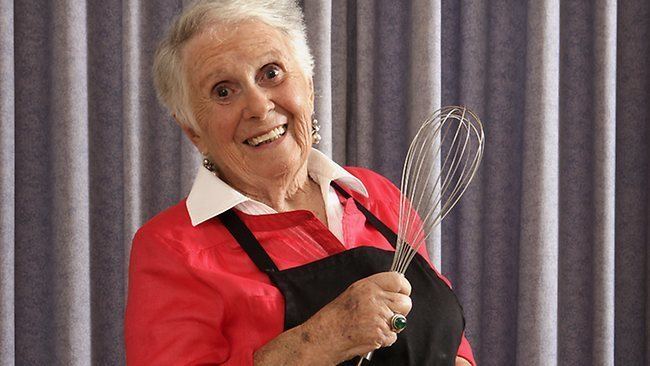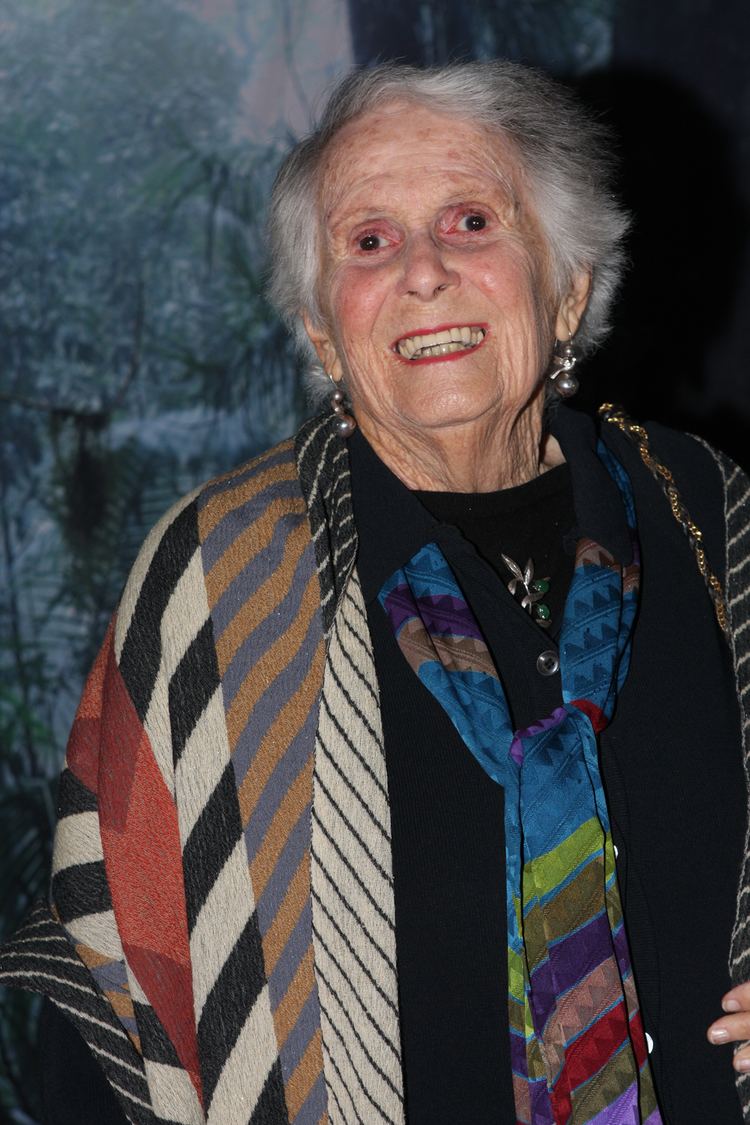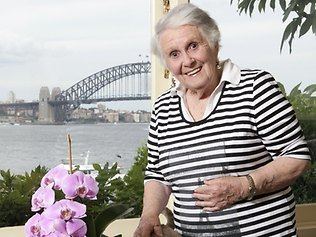Name Margaret Fulton | Role Writer | |
 | ||
Books The Margaret Fulton Co, Encyclopedia of Food and Cook, Margaret Fulton's Encyclop, Cooking For Dummies, Margaret Fulton Slow Coo | ||
Margaret fulton 1922 2014
Margaret Isobel Fulton OAM) (born 10 October 1924 in Nairn, Scotland) is a British-born Australian food and cooking 'guru', writer, journalist, author, and commentator. She was the first of this genre of writers in Australia.
Contents
- Margaret fulton 1922 2014
- Margaret fulton and me recipes for life from my grandmother s kitchen hd life matters abc rn
- Early career
- 1960s 1970s
- Later life influence
- Honours and awards
- References

Her early recipes encouraged Australian housewives to alter the Australian staple of "meat and three vegetables" and to be creative with food. She 'discovered' international cuisine from exotic places such as Spain, Italy, India and China and as Cookery Editor, 'brought these into Australian homes through her articles in the Woman's Day magazine'.

Fulton realised that chefs who did television shows tended to lose their audience. Accordingly, she remained a writer who regularly appeared only as a 'guest' on various TV shows.

Margaret fulton and me recipes for life from my grandmother s kitchen hd life matters abc rn
Early career

Fulton began as a cooking teacher at the Overseas Corporation in 1947 and was later promoted to sales manager where she was 'partially responsible for the introduction of the pressure cooker to Australia'.

In 1954, Fulton, then a 'home economist for a leading firm of cereal manufacturers', gave a talk on 'cooking with ready-to-eat cereals'. She told the audience that 'with more wives and mothers working, speed and ease in food preparation is a "must"'. She continued 'Many women have no training in home making, and packaged and ready-prepared foods, like cereals, cake, pastry and biscuit mixes, canned and frozen foods, make life easier'. A selection of 'hot muffins made with bran' were handed out and Fulton told the listeners that 'These are quick and easy to make and most economical'.
In 1956, over four days, Fulton provided French cooking demonstrations. Each day was organised with a different 'well-known French hostess, resident in Sydney' who 'planned a menu, contributed the recipes, helped with the cooking, and arranged the table setting'.
Fulton began to appear in advertisements in the late 1950s. She promoted 'Johnson's Glo-coat' floor polish and 'Johnson's Pride' surface polish from her 'well appointed Sydney kitchen' in March 1957. Later that year readers of The Australian Women's Weekly were told 'Margaret Fulton, expert Home Economist' believed Sellotape 'is so dependable' in a full page colour ad, which also offered Fulton's handy hints for using the product such as sealing plastic bags 'for deep-freezing foods' and binding pot handles. In 1959, Fulton told readers she used Sellotape 'each week for sticking my hundreds of recipe clippings into reference books'.
Prospective buyers of Woman's Day magazine in July 1964 were promised an '8-page liftout' from Fulton who was known for her Tuesday 'cookery class' at Sydney's 'Bistro'. Fulton's regular contributions continued throughout the decade with 1968's 'lift-out full colour' recipe guide to Italian food which was described by the magazine as 'our most exciting... ever!'.
1960s & 1970s
Fulton's book, The Margaret Fulton Cookbook, was published by Paul Hamlyn in 1968 and was an instant success. By 1978 it had sold 'more than two-thirds of a million copies'.
She returned to the Italian theme with the release of her 'Italian Cookbook' in 1973. The Canberra Times said the recipes were 'simple, tested... and where necessary adapted to suit the local scene' however Fulton was 'able to add authenticity to the book by taking a trip to Italy and checking the fare at first hand'. The author was quoted as recommending that cooks 'look for the specialty ingredients in a good delicatessen or gourmet section of a large retail stores. Use only the best quality Italian olive oil and when using grating cheese like Parmesan or Romano, buy it in wedges and grate it as you need it.'
In October 1973, Fulton was appointed to the Federal Government's 'Interim Commission on Consumer Standards' which was formed to 'reach as many groups as possible' and 'find the areas where action' on standards was 'most urgent'.
Interviewed in 1975, she provided Italian and 'Chinese style' recipes for readers and included in her advice for 'young people setting up home for the first time' was that they should 'buy a couple of really good saucepans and, if possible, invest in an iron oven casserole... they last a lifetime and these days are so attractive that they can be taken to the table'.
Following on from the popularity of late 1970s BBC television drama series The Duchess of Duke Street, set in London between 1900 and 1925, Fulton had a primetime TV cooking show of 5-minute episodes based on recipes from the era.
In 1979, her interest in Chinese cuisine led to her leading a planned '23-day gourmet food tour' which would include 'the finest restaurants' of Canton, Shanghai, Tsinan, Tsingtao, Kunming and Peking. Fulton said the tour would also visit 'historical sites... communes, universities, factories and handcraft institutes'. She also hoped there would be 'a chance to see acupuncture procedures in a Chinese hospital'.
Later life & influence
Fulton was awarded the Medal of the Order of Australia in the 1983 Queen's Birthday Honours 'In recognition of service to the media as a journalist and writer in the field of cookery'.
Fulton's encouragement of Chinese cuisine was recognised as a contributor to the development of Sydney's Chinatown district where 'few non-Chinese' ventured 'before the 1950s'. Fulton was one of the writers who 'began serving up Chinese recipes to Menzies' Australia' (recalling the era of Robert Menzies as Prime Minister from 1949 to 1966) and, as a result, Chinatown's 'few eating houses were seen as a welcome alternative to the spartan cuisine of the times'.
In 1998, Fulton was added to the list of 100 Australian Living Treasures by the National Trust of Australia. The same year, a packaged meals business venture 'Margaret Fulton's kitchen' which Fulton had been involved with her daughter and fellow chef Suzanne Gibbs and 'Sydney food luminary' Anders Ousback, failed.
In 2006 The Bulletin named Fulton in their list of 'The 100 most influential Australians'. In the citation they described her as someone who 'changed the way Australians ate at home'. She is, they wrote, 'Australia's original domestic goddess. No cookery writer since can claim her blanket influence... Fulton turned us into foodies.'
Interviewed by The Australian Women's Weekly in 2009, she said:
"Scarcely a week passes when I'm not invited to speak at a food industry or fundraising function and I always try to accept. At my age, being asked to pass on what I've learned is a pleasure and a privilege."
